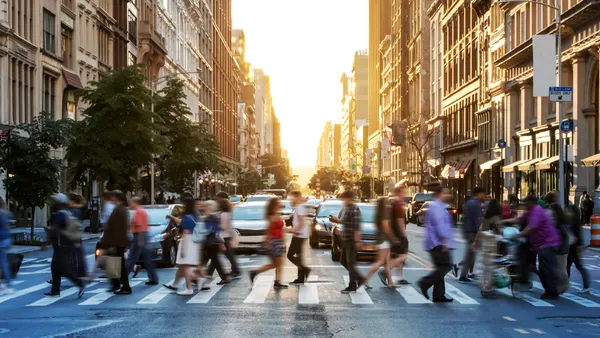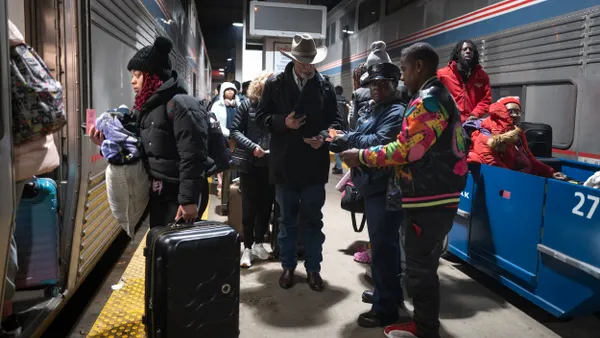Dive Brief:
- Seattle Mayor Jenny Durkan, D, has released the Seattle Climate Action Plan, which contains 12 initiatives for helping the city meet its goal of carbon neutrality by 2050.
- One of the proposals involves the Seattle Department of Transportation (DOT) developing a study to examine a congestion pricing strategy. That would be combined with transit expansions and electrification in low-income neighborhoods.
- Several other initiatives revolve around electric vehicles (EVs), such as further electrifying the municipal fleet; passing an ordinance this year mandating that new or renovated parking lots include EV charging infrastructure; and working with stakeholders toward electrification for all new for-hire vehicles.
Dive Insight:
The congestion pricing initiative appears to be the item receiving the most attention, but it offers few details on how and when such a measure would be developed and implemented. A number of the other items in the action plan call for immediate work, so strategies will be in place before the end of this year. One example is the intent to pass an ordinance this year that would require new or renovated parking structures to include EV charging stations, which is similar to an ordinance Atlanta passed last fall for all new construction.
Plenty of cities, including Minneapolis and Miami, already use dynamic tolling to ease congestion, and thus emissions, while others such as New York are currently working on congestion pricing plans that impose hefty fees for driving in portions of downtown. It's uncertain exactly what form any planned congestion pricing for Seattle would take until the DOT assessment occurs, and the Climate Action Plan does not offer a deadline for that study.
Seattle has been working to reduce its carbon emissions, but with its population continuing to boom and transportation greenhouse gas emissions (GHGs) increasing, the effort has been an uphill battle. Transportation comprises two-thirds of the city's carbon emissions, which is much higher than most other cities. New York estimates about 30% of its GHGs come from transportation, Los Angeles' estimates are about 34% and nationwide the Environmental Protection Agency puts estimates at about 27%.
Seattle's report admits far less progress on reducing carbon emissions than anticipated over the past decade. In order to meet the carbon neutrality goals, the city would have had to reduce emissions from passenger vehicles by 7.5% each year since 2008, but the actual reduction has only been 0.5% annually during that time. Durkan hopes the action plan initiatives will accelerate progress and get the city closer to its carbon neutrality goals more quickly.
Besides the Climate Action Plan, the city has made other attempts recently to reduce the amount of passenger vehicles on the roads, including revamping its parking regulations to lessen the number of buildings that are required to provide off-street parking.










